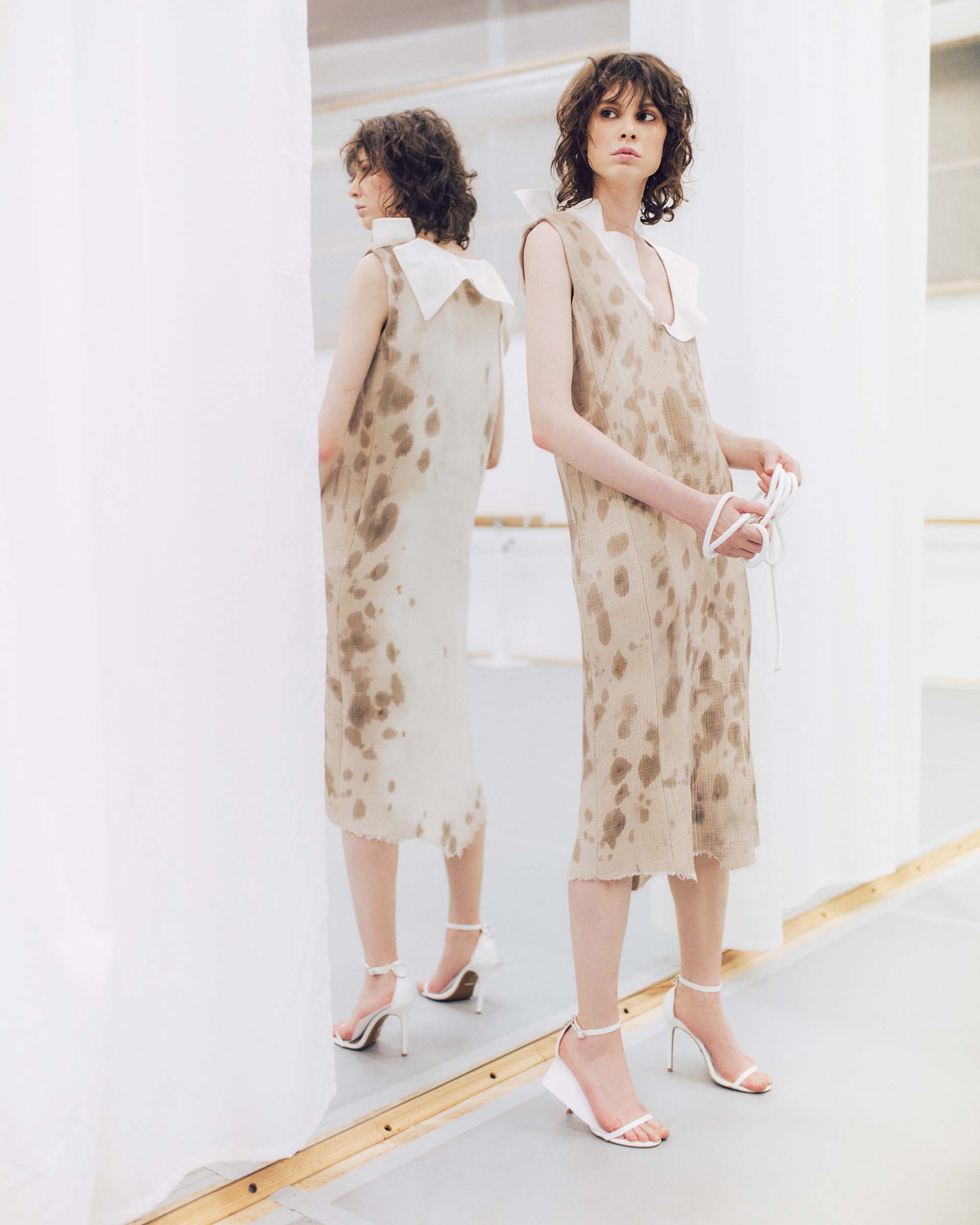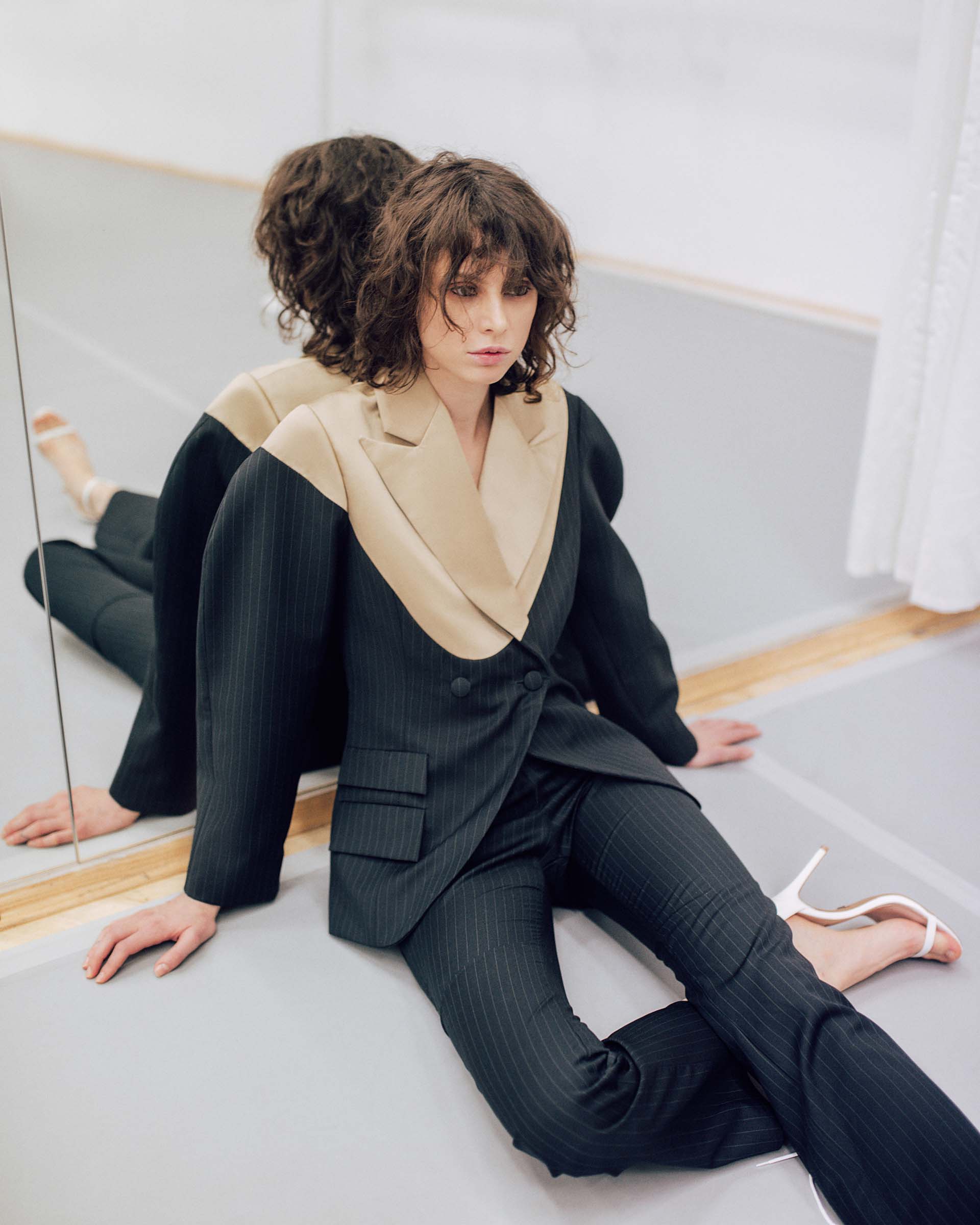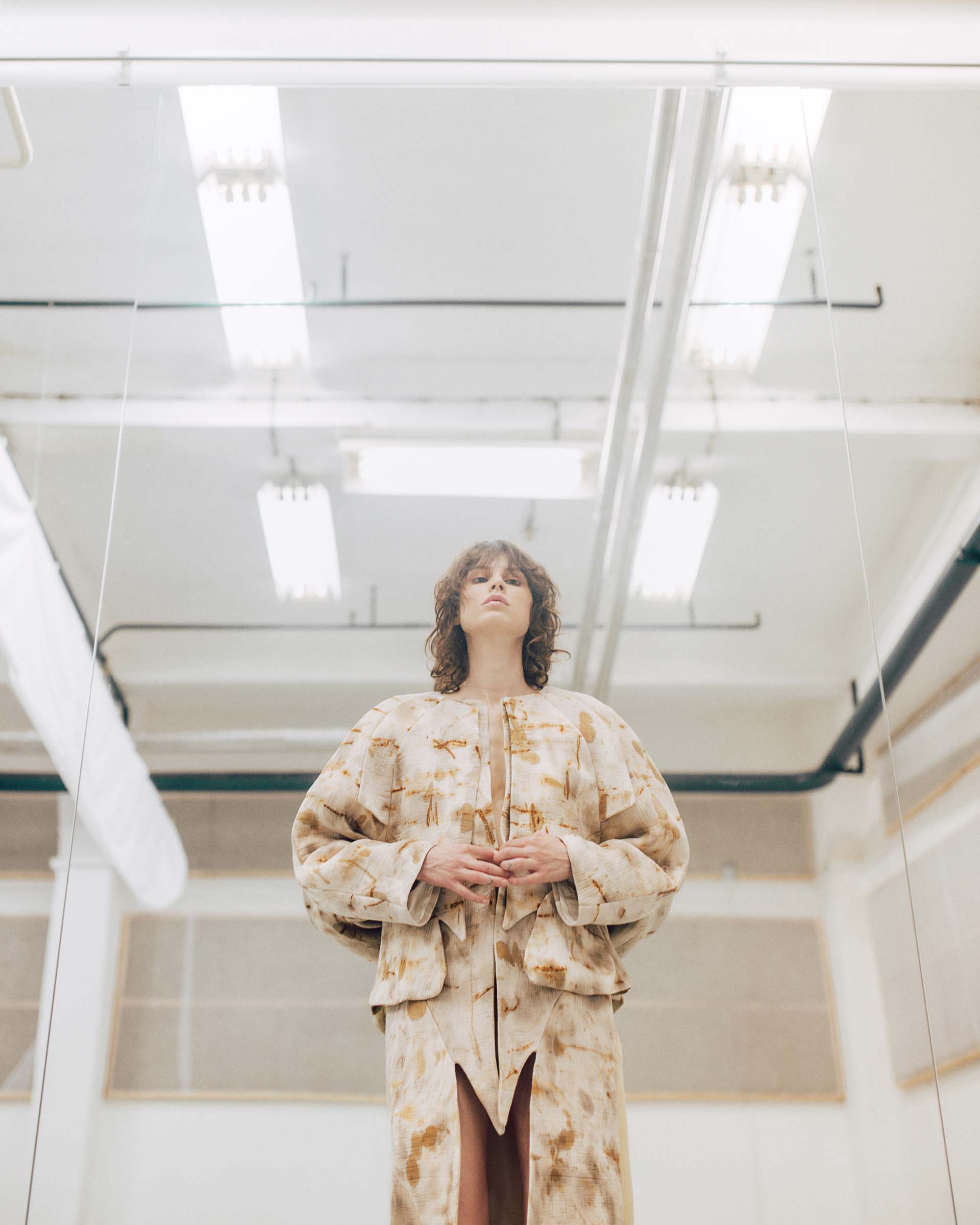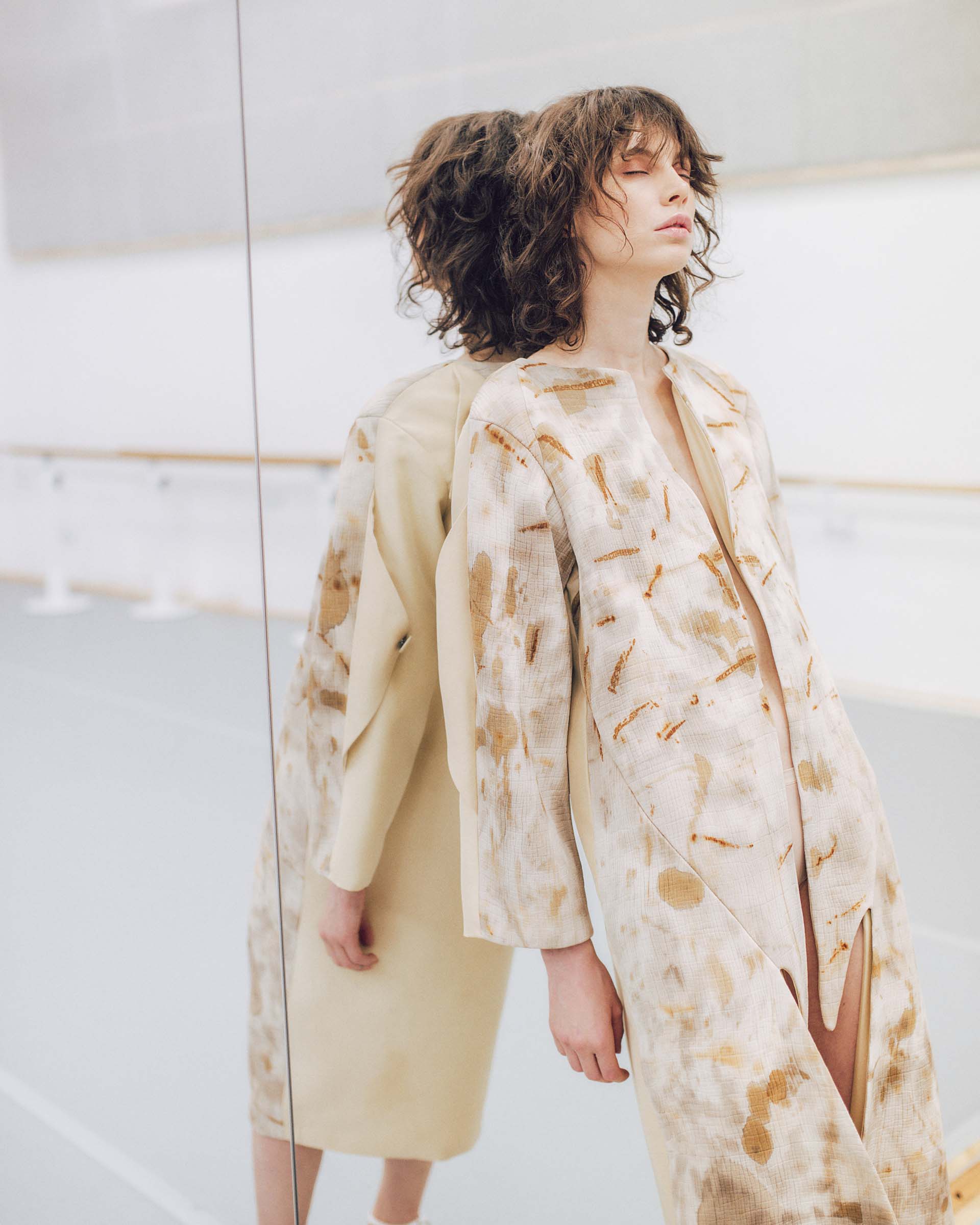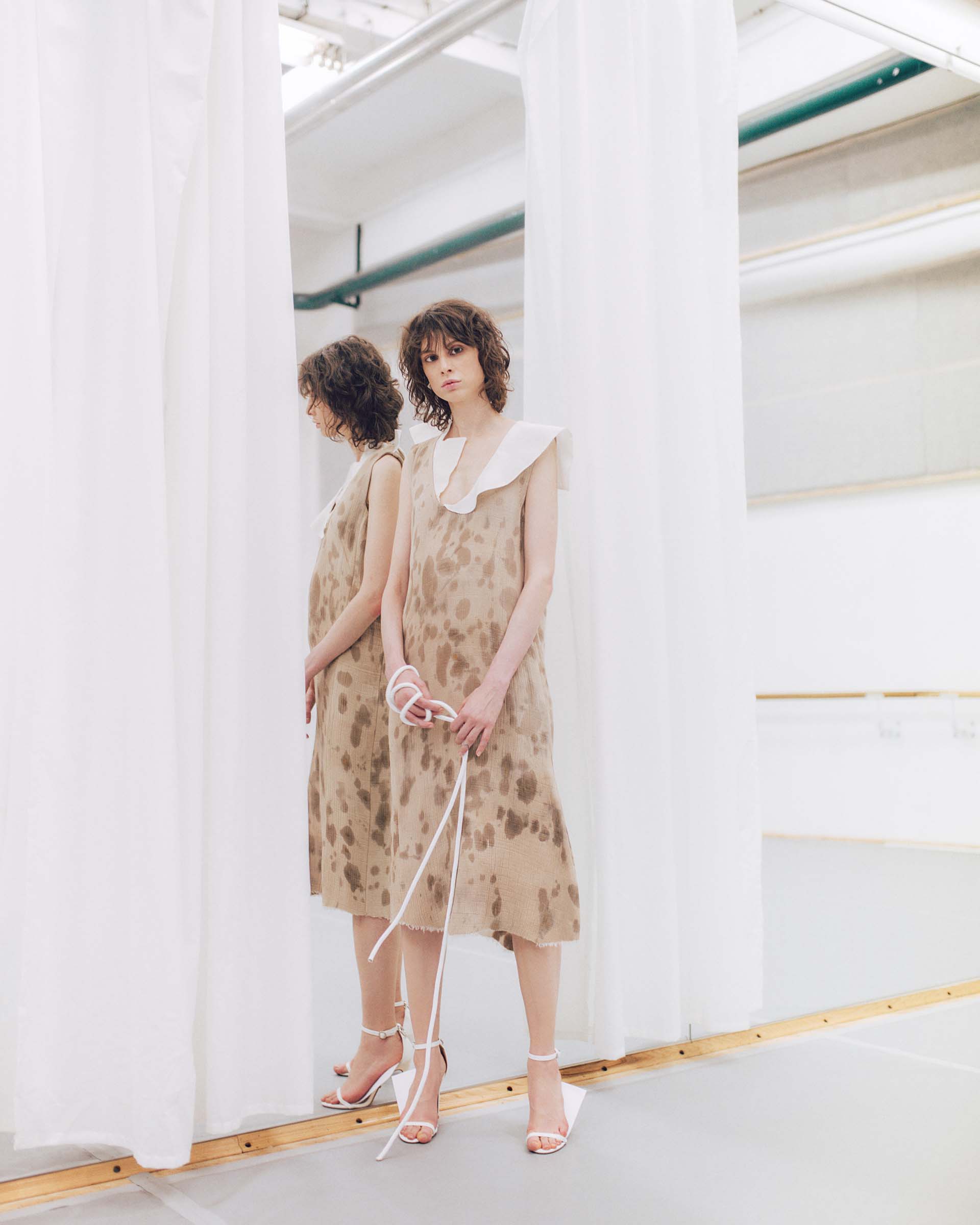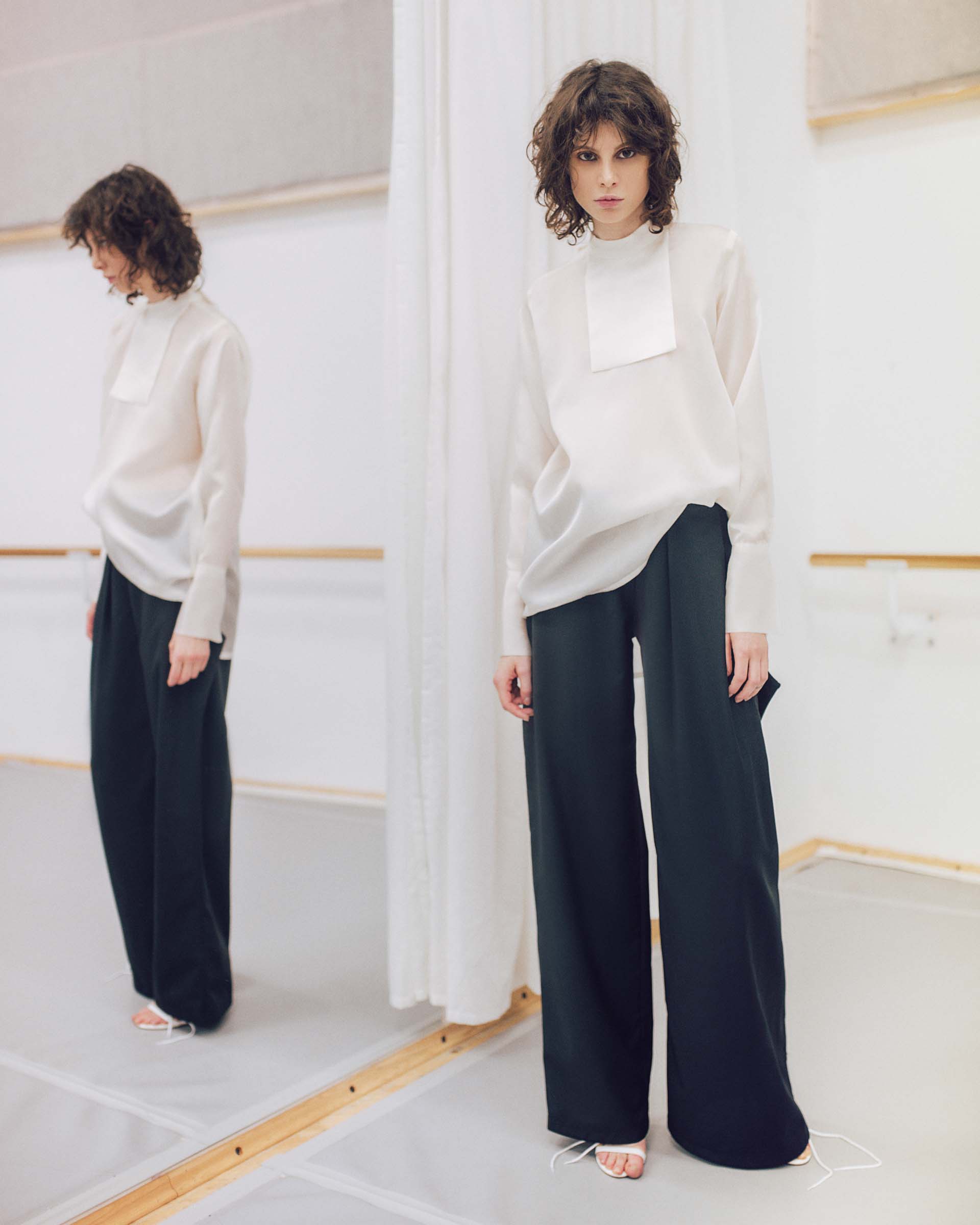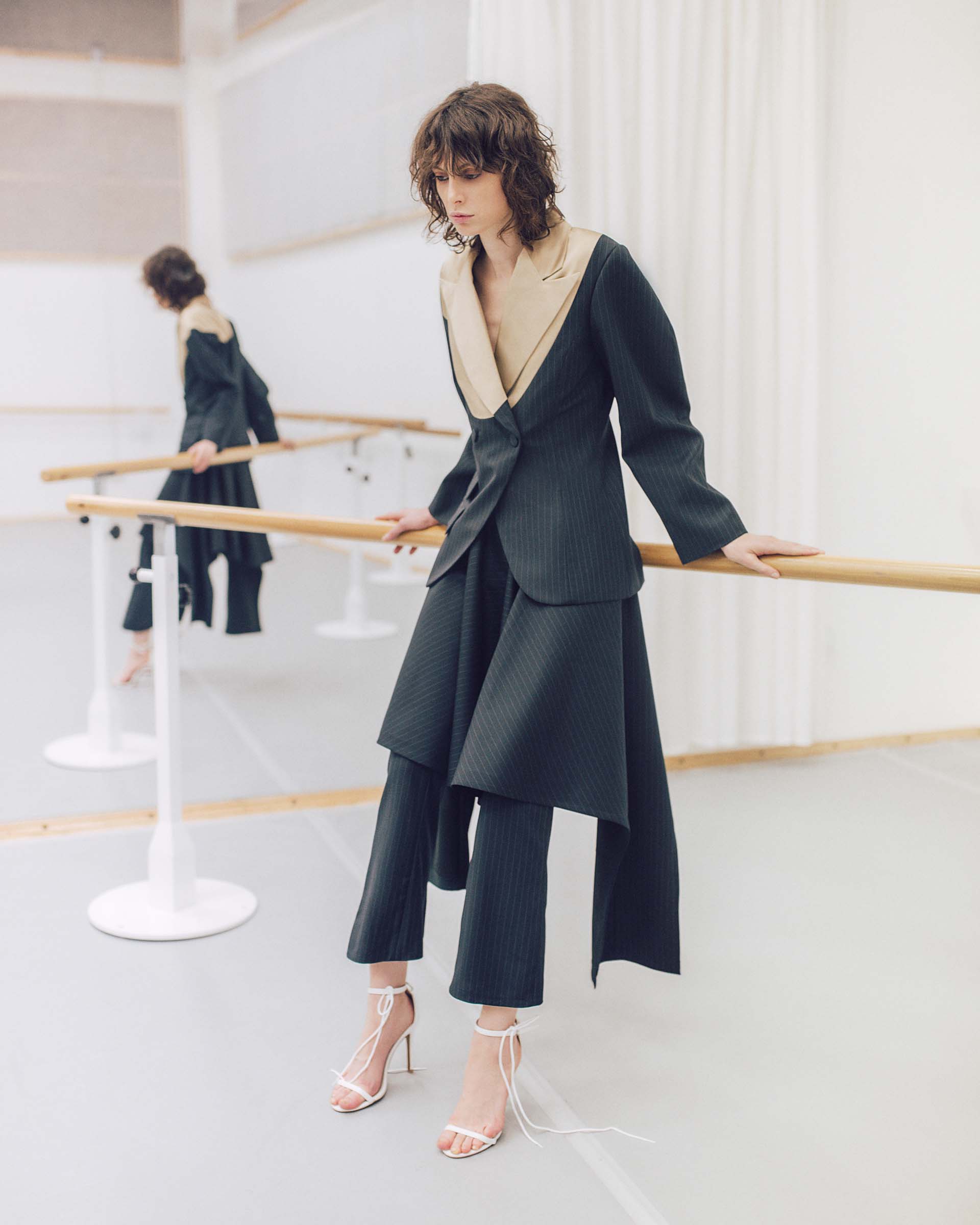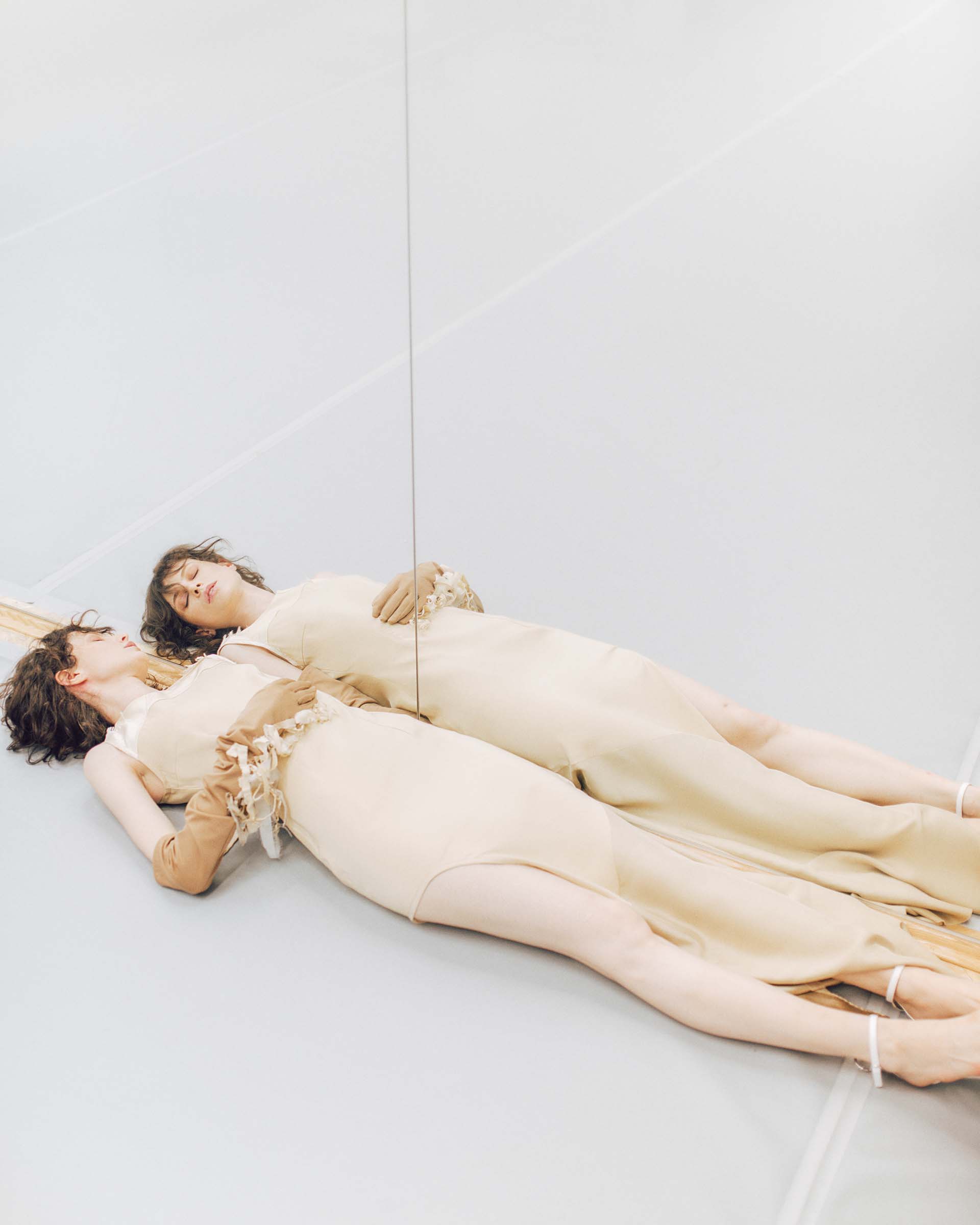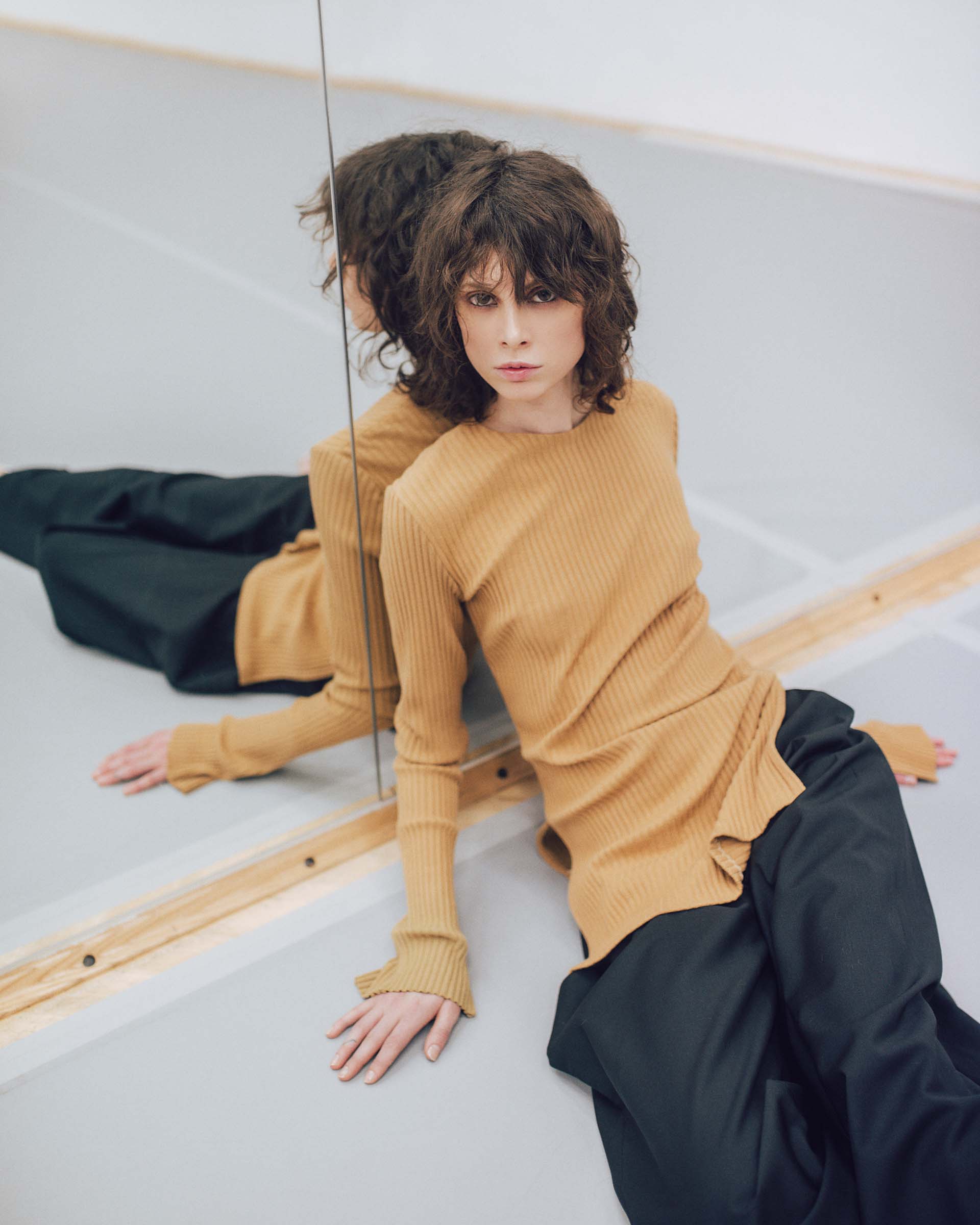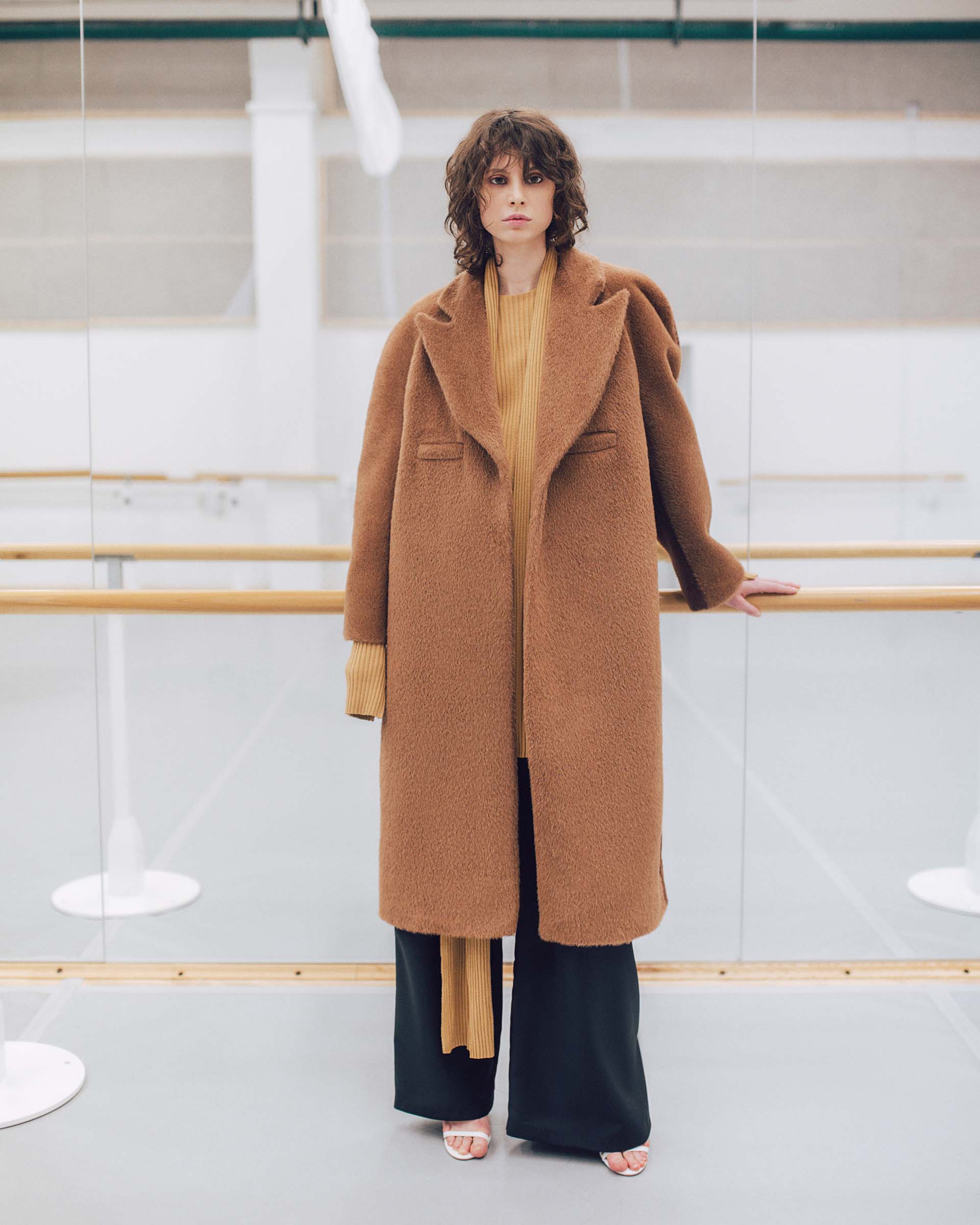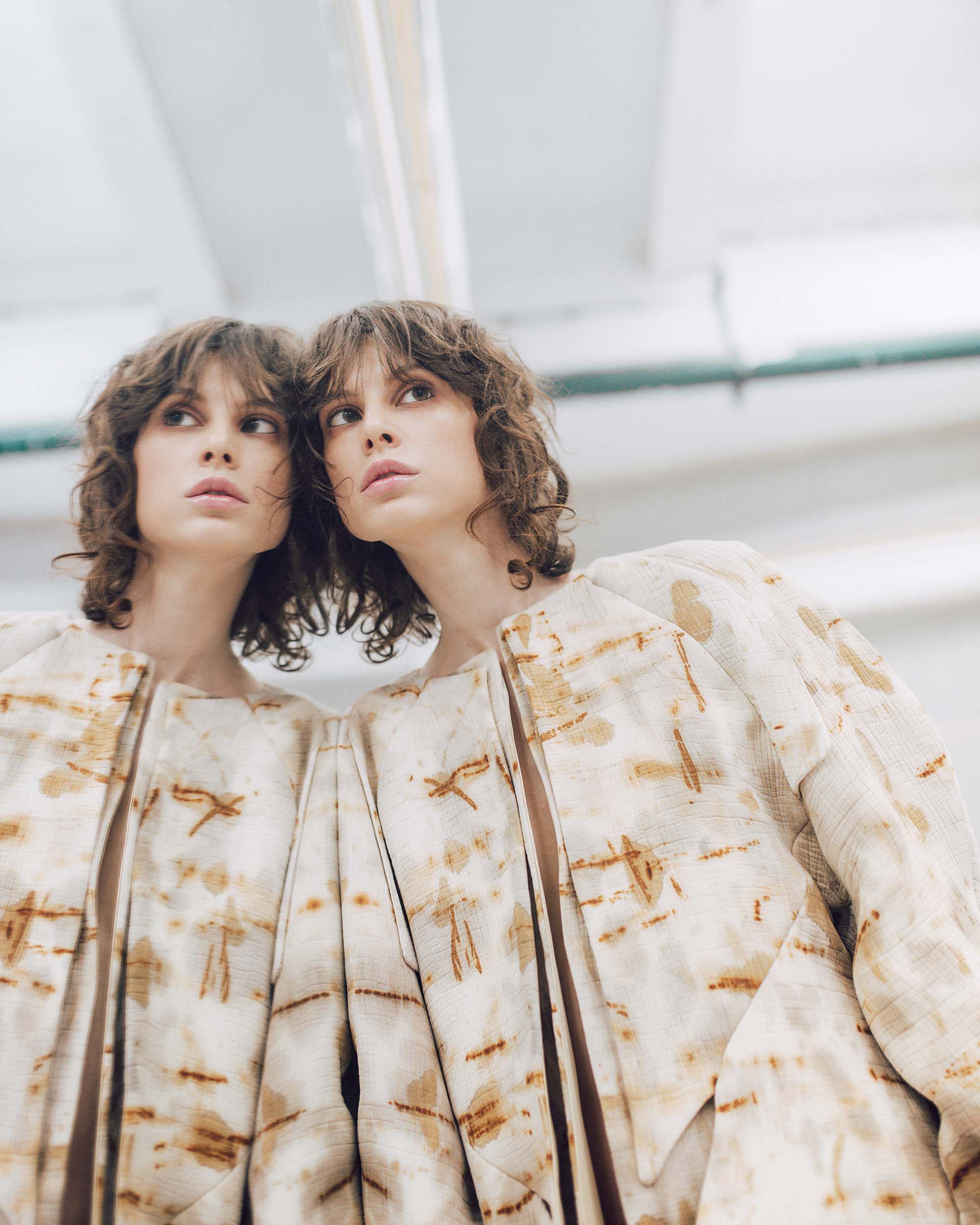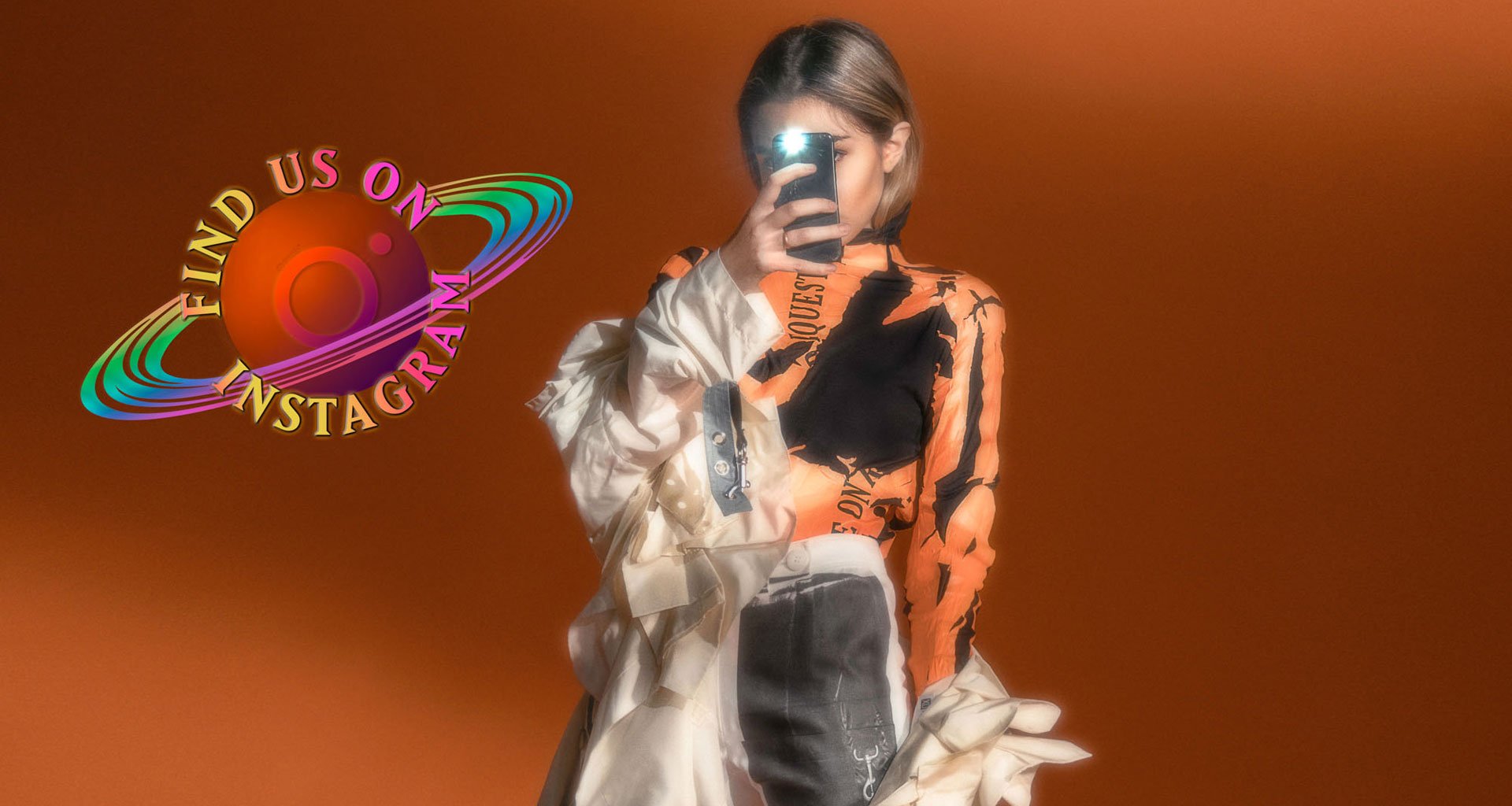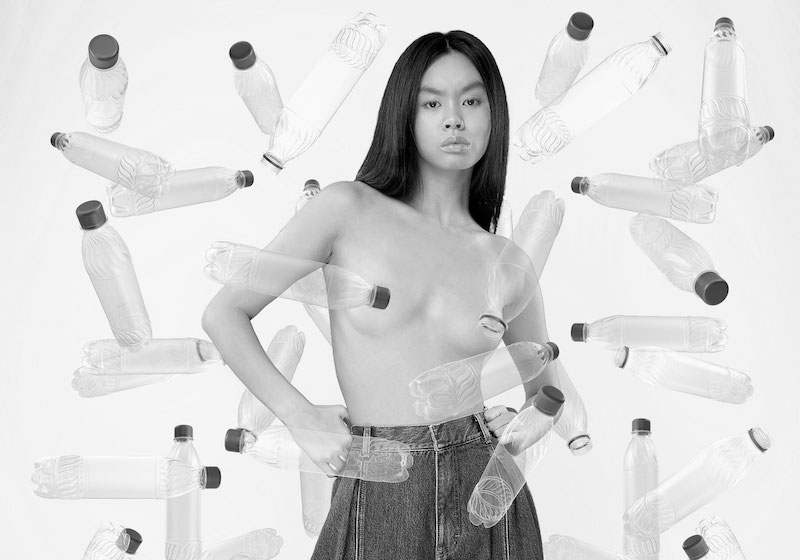Garden to runway: meet the Croatian designer using flora to make unique printed patterns
Herbal baths aren’t just some ridiculous new wellness trend. For small brands, like Zagreb-based Marija Kulusic, they are the only way to ensure the fabrics they use are sustainable.
“It’s a very intimate process,” fashion designer Marija Kulusic tells me of the labour and love behind her handcrafted garments. We are in the United Fashion showroom at Skopje Fashion Weekend, where promising brands from across the European fashion scene have gathered.
You don’t hear big-name designers talk about physical handiwork because they are removed from artisanal practices, having to turn around collections at breakneck speed. Kulusic’s story is different. The patterns adorning her latest collection were all created with the designer’s own hands, using objects found in her house in Zagreb, and flowers from her back garden. Since starting her eponymous label in 2017, she’s only ever used all-natural fabrics and dyes she’s developed herself.
The label’s aesthetic is sophisticated and sumptuous, which makes the makeshift methods behind Kulusic’s pieces all the more surprising. The silk used to make the dresses, jackets, and coats in this collection is dyed in a bath with plants and corrosive objects. “First, the fabric needs to be washed. Immediately afterwards, I find corrosive items, like nails from my garage, and wrap them in the fabric. After two to three weeks, the rust will expand onto the fabric,” the designer, who graduated from the the Faculty of Textile Technology in Zagreb, explains.
Kulusic’s experiments result in sparse and pleasingly organic, unique patterns
She lists chamomile (which she grows herself), black tea, coffee, and chicory as her favourite natural pigments. Eco-friendly fashion should not be limited to fabric choices, Kulusic argues: “Even if you’re using cotton of the highest quality, if you’re not dyeing it yourself, you’re never sure how sustainable it is.” Kulusic’s experiments result in sparse and pleasingly organic, unique patterns: at a glance, the rust-marks look somewhat like microbes swimming in a petri dish. At Skopje Fashion Weekend this past month, her splashes of tan and earthy hues stood out among the largely dark colour palette that dominated the runway.
There is another reason why Kulusic incorporates plants into her fashion; in her words: “we are getting really distant from nature.” It’s a criticism that could just as easily be directed at the fashion industry and its negligence — through waste, pollution, and exploitation — towards the environment. “I wanted to show that man cannot be without nature,” she says. As an emerging fashion designer, she wants not only to make conscious fashion choices, but also to leave her personal mark on her clothes. “And what’s more personal than using the flowers that grow in your garden?”
The white shirt is given a Regency-era makeover, only with none of the recognisable frills
Kulusic brings eco-consciousness into consideration at every step of her design process, while putting a new spin on wardrobe staples and everyday business attire. “I wanted to start with classic garments that are worn very often, such as a simple white blouse. I then went on to destroying and reconstructing them.”
The white shirt is given a Regency-era makeover, only with none of the recognisable frills. For this collection, she wanted to bring back the pinstripe wool suit jacket, adding touches of silk — usually reserved for the lining — onto the outer fabric.
The brand’s signature piece is a silk, hand-painted coat, that makes you look not just ready for spring, but dressed head to toe in it. “This is actually a classic coat with the lapel reversed upside down,” Kulusic explains. “It is made from completely natural silk, dyed with plants to get the printed pattern. It’s something you won’t find in business attire, yet looks like it would fit right in.”
Making everything herself, from the patterns to the finishes, means she’s had to forgo traditional retail schedules and typical season cycles. On why she favours slow fashion, Kulusic explains: “I really don’t like to rush things and I usually make a collection when I feel I have something to say or show, when an idea becomes stuck in my mind. It can be a life experience, an art form, or just a thought. My collections function somewhat like a diary.” Dyeing her fabrics is the longest step in the production process. Despite this, the designer asserts, “I prefer to do it this way to keep my connection with it.”
Dyeing the fabric in this way, whether soaking it in a bath or painting it by hand, also means that no decorative pattern is the same. All her garments are produced on a made-to-order basis, meaning there is a particular intimacy created between Kulusic and her customers that is hard to come by in the digital era. With such close attention paid to the delicacy and drape of the fabric, you really have to see Kulusic’s garments in the flesh.
Working primarily from her home in Zagreb, to an international customer base, the young designer is grateful for fashion events like Skopje Fashion Weekend, which offer pop-up showrooms and opportunities for connection. “I’ve learned a lot from this experience, including how to prepare for a showroom, how many pieces to include — all of which is invaluable.”
Marija Kulusic is available worldwide from the brand’s site.
Follow @marija_kulusic
